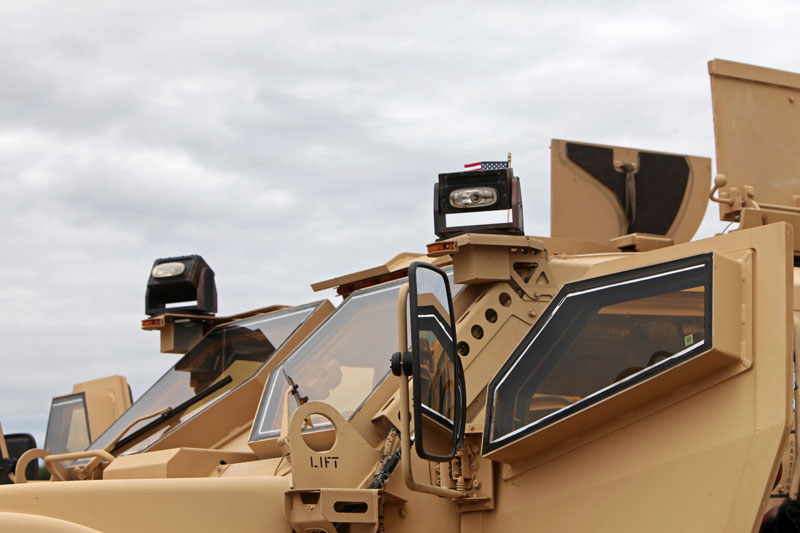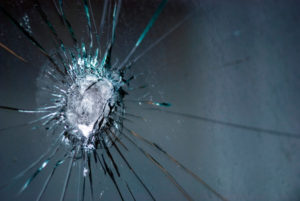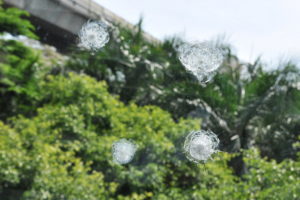
While much attention is paid to the arms, armour and engines on defence vehicles, often other components go under-reported; such as the security glass that allows operations to proceed with clarity and safety.
MOD DCB features editor Julie Shennan spoke with Kevin Webster, Technical Director of security glass company Romag, about this vital technology and its role in the modern defence marketplace.
Kevin Webster is the Technical Director of security glass specialist Romag, responsible for product development, process improvement in the factory and quality improvement. He explained the many defence and security applications for the material.
Mr Webster said: “Security glass protects lives from bullets and blasts. Whether it is in buildings or viewing windows in troop carriers or tanks, security glass is essential and the work that we do in the defence and security sector is quite varied.”

Buildings were the first places in which Romag installed security glass. Like many other transferrable technology companies, Romag originally designed its material for the civilian market, before noticing a niche in the defence marketplace.
Mr Webster explained: “Romag was originally set up to manufacture security screens for the banking and international commerce industry, with multiple layers of glass laminated together. This technology very quickly developed into bullet-resistant screens; we then enhanced the product range to include glass polycarbonate laminates which were lighter and thinner than conventional glass laminates, which somewhat addresses the ever-important issue of weight in vehicles.
“The natural progression for Romag was to produce both curved and ballistic glass windscreens, and we are now making defence and security glass for buildings, glass flooring, blast-resistant glass and curved ballistic glazing for vehicles.”
Success in the defence vehicle marketplace, Mr Webster noted, encouraged Romag to add further constructions to its already extensive product range to enhance levels of protection and to reduce the weight of the glass.
He said: “In the vehicle sector of defence supplies we are now involved in the Stanag / NATO military standards – this strength of glass protects users from armour-piercing projectiles, grenades and the like. We put this standard of glass in armoured JCB-style vehicles through to troop carriers and so on.”

Manufactured from several layers of glass of various thicknesses which are bonded together with tough polyvinyl butyral (PVB) interlayers, ballistic glass is tailored to suit each situational requirement and the relevant threat level. The overall thickness is determined by the assumed ‘threat level’ specified by the customer. On attack, the frontal layers of glass are designed to shatter and absorb the initial impact energy; subsequent glass layers and PVB interlayers absorb the lower-level shock waves as the initial impact energy tracks through the glass panel.
In respect of the manufacturing process, Mr Webster explained how the ballistic glass market had changed in recent years.
He said: “Manufacturers now regularly laminate glass with polycarbonate, which makes a lighter, thinner material to meet the given specification and threat levels. Romag is now using a lot of innovative high tech interlayers that were not available ten years ago – with better low-temperature properties / performance, infra-red reflective technology and polyester films that help hold the glass together giving additional strength and rigidity to the glass panel, while reducing weight.”
These technological advancements look set to continue as defence requirements become more and more diverse with ever-increasing levels of protection and weight reduction.

Mr Webster commented: “Looking forward, there are some exciting developments with transparent ceramic armour, which offers the next level of thickness and weight savings.
“As the tech to produce this becomes more and more available then they will probably be used more regularly in higher-end ballistics. As you go higher and higher in ballistic standards the glass weight increases significantly and you end up having to get a bigger and heavier vehicle just to carry the extra weight; so the more weight you can save in the glazing the more efficient the vehicle becomes.”
Weight efficiency is just one of the many demands that defence suppliers face; another, Mr Webster explained, is the through-life development cycle.
He said: “You don’t just make a ballistic product; you have to go through rigorous testing and prove that it will work before you even get to look at supplying a defence contract. Defence buyers need to know that your product is reliable, so if you are supplying a bullet or blast resistant glass they need to know that it will work to the required standard which is independently approved.”
He added: “There is no room for error; you need to have the process controls, standard operating procedures and all the checks and balances in place to prove the material that you have used to make your product is of the required standard.”
This thorough testing process does, however, bear fruit and can lead to lucrative defence and security contracts. This has indeed been the case with Romag, which now supplies security glass to projects such as military vehicles, cash-in-transit vehicles, embassies, banks, airports and VIP transport around the globe.
Mr Webster concluded: “The defence sector is similar to the rail and aerospace sectors – buyers look for traceability and quality components.”
If you would like to join our community and read more articles like this then please click here








